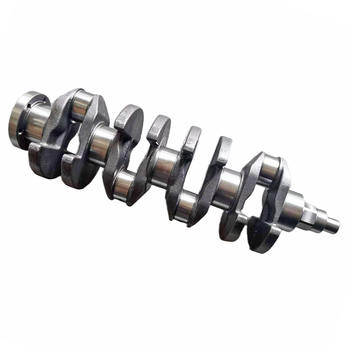The crankshaft sensor is an essential component of your vehicle's engine management system. It plays a critical role in monitoring the engine's RPM and position and relaying this information to the engine control module (ECM). When the crankshaft sensor fails, it can cause a variety of engine problems, such as stalling, poor acceleration, and difficulty starting the engine.
Identifying Crankshaft Sensor Problems
Before diving into troubleshooting crankshaft sensor problems, it's essential to first identify the symptoms of a faulty crankshaft sensor. Common signs of a failing crankshaft sensor include:
If you notice any of these symptoms, it's worth investigating whether the crankshaft sensor is the root cause.
Testing the Crankshaft Sensor
To determine if the crankshaft sensor is faulty, you can perform a few tests. Firstly, check the sensor's wiring harness for any signs of damage or corrosion. If the wiring appears to be in good condition, you can use a multimeter to test the sensor's output voltage. Typically, the crankshaft sensor should produce a voltage signal between 0.1V and 1V when the engine is running.
If the sensor's output voltage is outside of this range, it may be faulty and require replacement. However, if the output voltage is within the specified range, the issue may be due to a problem with the ECM or wiring.
Troubleshooting Crankshaft Sensor Problems
Once you've identified that the crankshaft sensor is the source of the problem, it's time to troubleshoot and repair the issue. Here are some common troubleshooting steps for crankshaft sensor problems:
Cleaning the Crankshaft Sensor
In some cases, the crankshaft sensor may be dirty or covered in debris, causing it to malfunction. To clean the sensor, first disconnect the battery to prevent electrical shock. Then, remove the sensor from the engine and use a soft-bristled brush and electrical contact cleaner to clean the sensor's terminals and sensor face.
Reinstall the sensor and reconnect the battery. Start the engine and check if the symptoms persist. If the issue persists, it may be necessary to replace the sensor.
Replacing the Crankshaft Sensor
If cleaning the sensor doesn't resolve the issue, it may be necessary to replace it. Replacing the crankshaft sensor is a relatively straightforward process that can be done with basic tools. Firstly, locate the sensor on the engine and disconnect the electrical connector.
Remove the sensor's mounting bolts and carefully pull the sensor away from the engine. Install the new sensor by reversing these steps and ensure that the sensor is securely fastened to the engine. Reconnect the battery and start the engine to check if the issue has been resolved.
Preventing Crankshaft Sensor Problems
To prevent crankshaft sensor problems from occurring in the future, it's essential to maintain your vehicle's engine properly. Regular oil changes and tune-ups can help ensure that the engine is running smoothly and reduce the risk of sensor failure. Additionally, it's recommended to have the crankshaft sensor checked during routine maintenance to identify any potential issues early on.
Conclusion
Crankshaft sensor problems can cause a variety of engine issues that can be frustrating to diagnose and repair. However, by following the steps outlined in this guide, you can identify and troubleshoot common crankshaft sensor problems and get your vehicle back on the road. Remember to maintain your vehicle's engine properly to prevent future sensor issues from occurring.




